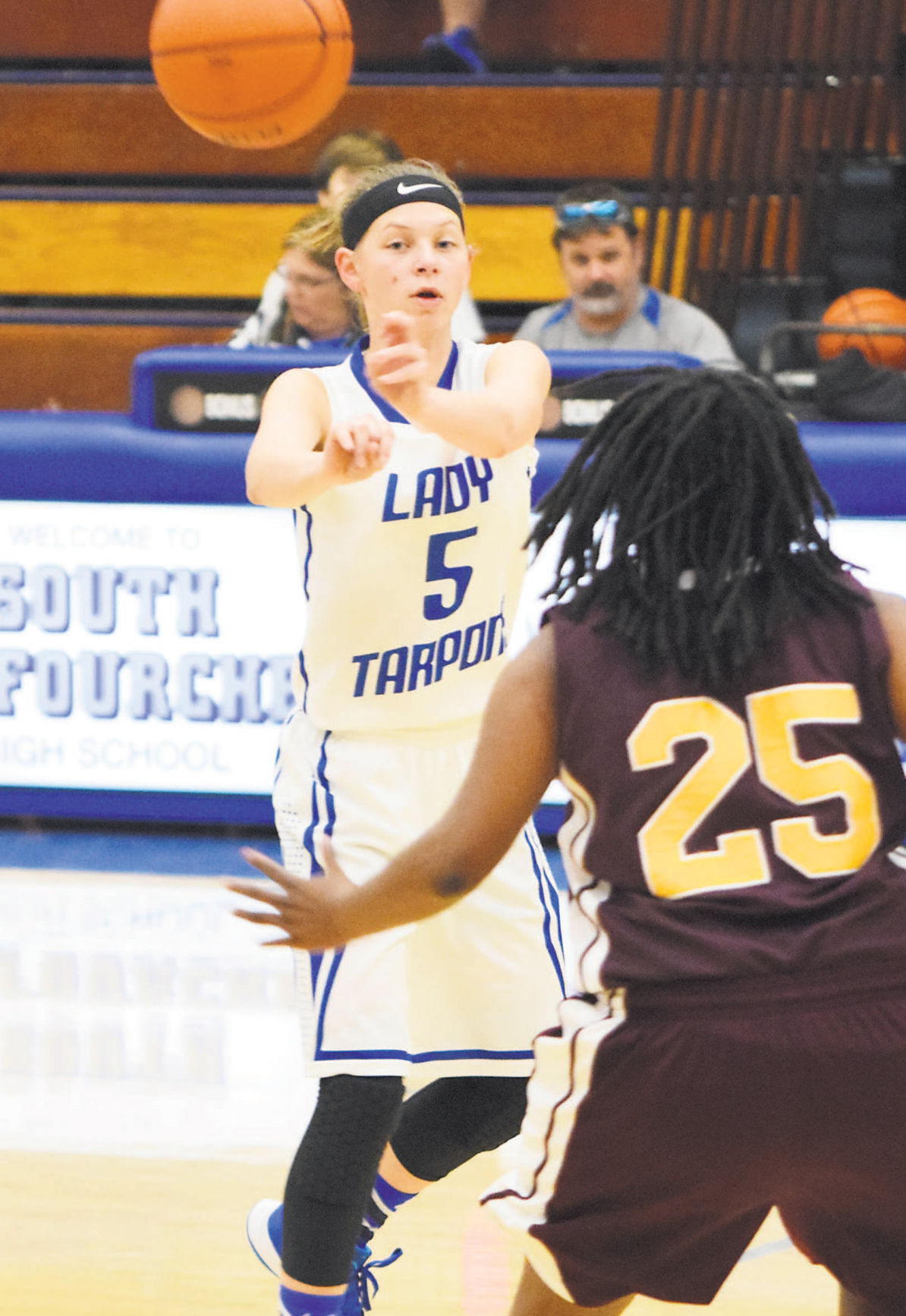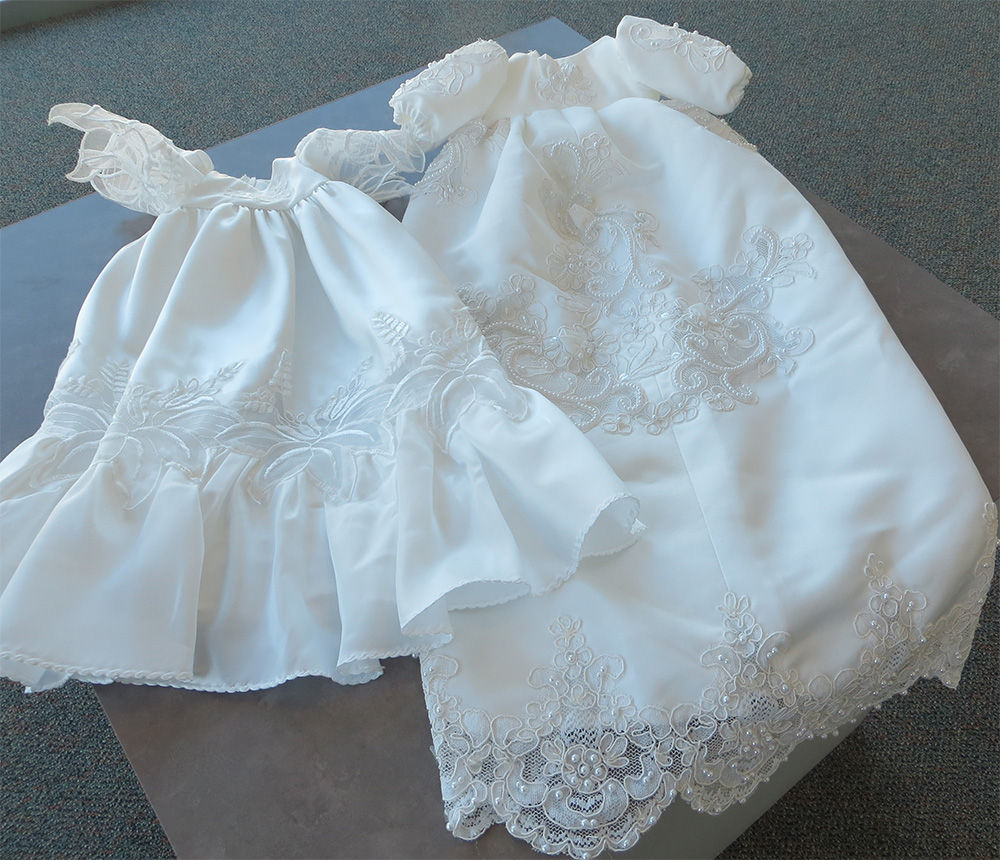LETTERS TO THE EDITOR
February 25, 2016
PLAYER OF THE WEEK
March 3, 2016The day brides-to-be select that perfect wedding dress, complete with intricate beading or timeless lace overlay, is a significant moment, one that will never be forgotten. After the reception music fades and the honeymoon is over, however, that precious gown often gets relegated to the back of the closet or attic, never to be worn again.
Martha Leblanc’s passion project, Angel Gowns, though, is putting to use those only-worn-once dresses in a special way, transforming them into tiny gowns for babies who never make it home.
The first gowns were crafted a little over a year ago when Leblanc saw a Facebook post detailing a similar Dallas-based project. Having years of sewing experience behind her, she knew she could create gowns similar to the ones she saw online for the families of Terrebonne and Lafourche parishes.
“I took my wedding dress and I made a christening gown for my grandchild out of it,” the former high school home economics teacher turned realtor said. “It was beautiful and then not long after that, I saw a post on Facebook about some women in Dallas doing angel gowns. They explained what they were doing and how they were doing it and I thought to myself, ‘I can do that.’ My sister had a dress that’s 50 years old so she and I made those gowns together. People started questioning us and asking if they could help.”
Interest continued to grow and before long, Leblanc began gathering her friends, many of whom are part of another local sewing group, Happy Gowns for Joyful Hearts, who volunteer their time monthly to fashion vibrant, cheerful hospital attire for chronically ill children, to help. The group that creates the angel gowns meet twice a year to crank out as many of the white and cream-colored outfits as possible to serve the needs of local parents, with 70 having been distributed in 2015.
“We laugh we have fun, we cry together,” Leblanc said of the close-knit group.
Each gown is given the utmost attention, with work ranging from six to eight hours for one gown. Once group members receive donated wedding dresses, each is washed then carefully broken apart, preserving each and every pearl or bead in the process. From there, a pattern created by Leblanc is used across the board to create the gown, with the ladies adding their own special touches through the use of the saved embellishments.
Even smaller buntings, pouch-like attire for infants, are also fashioned, a request from medical staff for those too small to wear the ornate dresses.
“The hospital said some of these babies were too small for these dresses and could we do a baby bunting,” Leblanc explained. “So I designed the pattern for the bunting and the ladies embellished on that and developed their own style, the way they wanted them to close and things like that.”
Once complete, angel gowns are shared with Terrebonne General Medical Center, Thibodaux Regional Medical Center and Ochsner St. Anne Hospital, as of 2016.
“Sometimes it’s very difficult for the parents. A lot of times, just like if you experience a family death that is sudden, that’s not something that somebody is expecting,” TGMC Director of Women’s Services Kerrie Redmond said. “We want to be very respectful in these times and to have these gowns is very special to us and very special to the families because they have these beautiful gowns that they can put on their babies…It’s just a really respectful and beautiful way to present the baby to the family where they can spend some time with the baby and spend some time saying goodbye before they have to bury their baby.”
“It’s a really meaningful thing,” Thibodaux Regional Women’s Center Director Richelle Dufour added. “We let them know it is a donated gown. It was worn on a happy occasion and this was donated by the ladies…That sometimes brings some comfort to the families to know that it is a special memento.”
The labor of love has not only garnered the attention of many willing to give of their time or personal belongings, but also those willing to share stories of the hardship surrounding infant loss.
“About two months ago, Bruce Murphy, the president of Nicholls, called me and said, ‘I heard about your project from Terrebonne General and I want to come talk to your group.’ I was surprised because I didn’t know him at all,” Leblanc remembered. “I told him sure and that he could come while we were sewing. He told us a story about how his parents had lost a child 50 years ago and how they still mourn that child. His mom couldn’t even hold the baby. They wouldn’t let her see it. He came to tell us how important it was that moms could grieve and that they would have this gift from a bride.”
The most recent findings from the Department of National Vital Statistics show that 23,595 fetal deaths at 20 weeks of gestation or more in the United States were reported in 2013. Although the cause for many fetal deaths is unknown, Redmond said factors that could increase the risk include race, control of issues like diabetes and high blood pressure and advanced maternal age, or any expecting female over the age of 35. Dufour also said she encourages expectant mothers to remain in tune with their baby’s movements, sitting in a quiet space from time to time and paying close attention to any roll or nudge.
For those that give of their precious wedding dresses to create a much smaller but equally sentimental item, the act of giving is an honor.
“No parent should have to be faced with picking out and buying a gown for their newborn to be buried in,” Jennifer Blanchard, who donated her wedding dress to the cause in December, said. “The situation is already sad and traumatizing enough. When I donated my dress, I knew it would help more than one person or family and that’s worth more than any money I could have made selling it.”
And through word of mouth and online talk of the project, Leblanc’s creations are garnering attention from those many miles away, but eager to help out.
“I’ve gotten several calls from out of state,” Leblanc said. “I’ve gotten a call from Bowling Green, Kentucky. I’ve gotten one from Arizona. Just all over. People that don’t live here that were willing to mail them…I tell you what, every time I tell somebody about the project, every woman tears up.”
As the angel gowns initiative grows, Leblanc said her greatest need is for those willing to sew at home. She provides each seamstress with a pattern and the material, allowing them to infuse their own creativity into each tiny gown created. With more hands on deck, more gowns can be made.
“It’s caught on, it’s beautiful and it’s healing for the brides,” Leblanc said. “They have no use for their dresses. Some are divorced, the kids don’t want them, so it’s repurposing. It’s the ultimate recycle.” •









